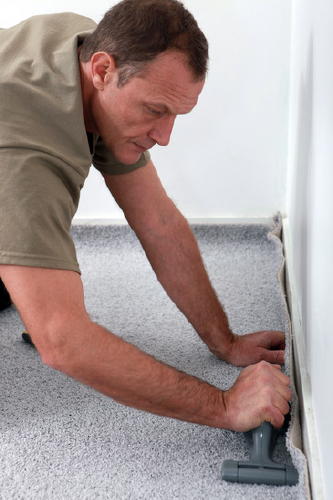If rainwater finds its way into your home during a storm, it could mean big trouble for your carpeting. Drenched carpets can be difficult to clean and restore, and if the water damage is extensive, you may even have to replace your carpeting. Before going to that drastic step, there are ways to salvage the carpets in your home, but you’ll need to identify damages quickly and move fast on the clean-up job.

Determining the damage
Whether or not your home’s carpets can be cleaned and restored will depend on a few factors. First, you’ll need to be able to start the clean-up work within 48 hours of the carpeting being exposed to the rainwater. If your carpets have been soaking in rainwater for any longer, they most likely won’t be salvageable. You’ll also need to identify the cleanliness of the water that’s damaged your carpet. If the rainwater has become contaminated with pollutants, organisms, or waste, it can turn your carpeting into a health hazard. The colour of the water can help you determine your next steps. If the water is grey in colour, it is unsanitary and may have discharge from dishwashers or washing machines. Dark or black water contains disease-carrying elements and is extremely unsanitary. If your carpets have been soaked with black water, then they’ll need to be replaced. Call in a professional to assess carpets soaked with grey water, as they might be salvaged with disinfecting treatments.
If the water is clean
You can proceed with the cleaning of your carpeting if you are sure that the rainwater that soaked your carpet is clean. If you have area rugs that have been affected by the rainwater, have them cleaned by a professional cleaning service so that they can be restored to a proper sanitary condition. Smaller throw rugs can usually be tossed in a washing machine and cleaned with hot water and a disinfecting agent. You can use bleach to help with the disinfecting process, but bear in mind that it could affect the colour of the carpets.
Cleaning the impacted carpets
The best way to start the cleaning process is to remove the carpeting (if possible), have it cleaned, and then reinstall it. If your carpeting is installed with track strips, it can be removed for a more thorough cleaning. When it comes to carpet padding, it will only be salvageable if a small area has been impacted. If a large area has been saturated, you’ll need to remove and replace the padding. For carpeting that’s been glued to the floor without a pad, a shop vacuum can be used to remove excess water, and dry blankets and towels can be used to blot additional wet spots. Next, you’ll need fans to help dry the carpet, which should ideally be running within 24 hours of the carpeting getting wet to help prevent the growth of mold and fungi. If only a small section of your carpeting was soaked by clean rainwater, you can pull up and then prop up the wet section to let it dry. While it’s propped up, cut away the wet padding and replace it if it’s been saturated.
If rainwater has wet your carpeting, contact us to help assess the extent of the damage and determine what steps can be taken to clean your carpets.

